This post is comprised of different sections
Take a look at our review of Dark Matter!
Learn more about Many-worlds interpretation!
This post is comprised of different sections
Take a look at our review of Dark Matter!
Learn more about Many-worlds interpretation!
Author: Blake Crouch
Publisher: Crown Publishing Group
Year: 2016
Language: English
Country: USA
Number of pages: 342

Our rating
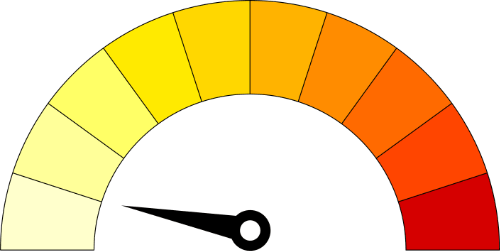
Your rating
In most of my articles, there is always an interesting (or so I tend to believe) background story that led me to the particular work I’m reviewing.
With Dark Matter, that story is rather unremarkable…
I literally went to google and typed: “mind-bending books”. Dark Matter came up at the top of the list in goodreads.
So, I decided to have a go at it.
I have to admit that I usually take months, sometimes over a year, to finish a novel – yes, I’m a terribly slow reader. With Dark Matter, I finished the novel in just about 3 weeks. For me, that is some serious lightning-speed reading.
And that, my friends, attests to how engaging the book was, and made me start wondering if I’ve been reading the wrong books… (by the way, the book it took me most time to read was Foucault’s Pendulum by Umberto Eco, which took me longer than a year to finish – I dare you say you read it faster!!).
Dark Matter tells the story of Jason Dessen, a high-school teacher of Physics, who lives in Chigago with his wife Daniela and their teenager son Charlie.
Jason had been a world-class physicist, who gave up his very promising career 15 years ago in order to focus on family.
One day Jason is kidnapped and drugged by a mysterious masked man, and ends up in a parallel universe, where everything and everyone he knows have changed.
Jason desperately tries to get back to his own world and family, stumbling along the way on all sorts of alternate worlds.
Dark Matter is like a book on steroids; the story progresses at lightning speed. Sentences are often 4/5 words (almost like a screenplay), and there is really hardly any boring section. I guess Crouch intended to grip readers to the story, and he certainly succeeds. I was captivated from beginning to end.
Having said that, I found the story line disappointing at times.
As it’s often the case with action thrillers, there were a certain amount of clichés.
For example, the protagonist is in possession of a few dozen ampoules with which he tries to find the universe from which he came, and, of course, he has to exhaust almost all of them for us to know if he succeeds or not. This is just another version of the diffusing-a-bomb-in-the-last-second kind of situation.
I’m really not sure why authors insist to leave everything to the last moment/second, since it tends to make the story predictable.
Then there is the whole escape from the high-security facility. The psychiatrist is the one that saves Jason by disabling the security cameras. But what sort of high-security facility is this, that even the psychiatrist is able to disable the cameras? Again, it just strikes me as unbelievable…
There is also the occasional “I need a car! Oh, this car has keys in the ignition, aren’t we lucky?”. (for all the Americans out there, do you really leave your car keys in the ignition?).
The title is also a bit misleading. I was really excited and hoping to read about the role of the mysterious dark matter in the narrative, but there is no real treatment of it in the book.
There is a point in which Jason2 explains to Daniela that dark matter is a mysterious form of matter that holds galaxies together and makes up most of the matter in the universe.
Then there is this sentence “Some string theorists think it might be a clue to the existence of the multiverse”. And that’s it! No real attempt to delve deeper into how dark matter is related to the multiverse.
Of course, I wouldn’t expect a scientific treatise. But mentioning dark matter and then just leave it at that was sort of unfulfilling.
Nevertheless, I could tell the author did his research, although I think he could have delved deeper on the philosophical implications of the Many-worlds multiverse.
The topics are dealt very superficial and the focus is more on action rather than the philosophical/scientific questions.
In the end, the novel feels like it has been written with cinema/television in mind.
Don’t be put off by my review – I’ve noticed I seem to be a little pricklier with novels than with other forms of entertainment, probably because it requires a greater deal of time to dissect and analyse.
I definitely recommend the book! It’s gripping from beginning to end, and it will make you question reality at a very human level.
As I will explain below, the Many-worlds theory has been a theory seriously considered by many world-renowned theoretical physicists. As a matter of fact, it is one of the few successful theories that can accommodate many paradoxes that have been bothering physicists’ minds, without breaking any laws of physics.
Notwithstanding the 3-4 word sentences, Crouch is a good writer and I liked the fact he did not attempt to be presumptuous. The story line is easy to follow, and you will never get bored.
Personally, I would have welcomed a bit more scientific background and deeper philosophical debates, but, of course, that might have never been Crouch’s intention with this book from the beginning.
Here, at Mindlybiz, Dark Matter gets a star rating of 3.5.
When I googled mind-bending books, and got this book as a first result in goodreads, I thought I would have in hands a very strange book with many twists and turns.
But it isn’t.
The story isn’t confusing or weird at all. Maybe, if you aren’t familiar with the concept of the multiverse (and the Many-worlds interpretation in particular), you might struggle with the explanatory parts.
However, those are few and far between, and they won’t be a determent to enjoy the novel.
In fact, the book only contains two elements that make the story slightly strange: Daniela’s exposition (which is awesome by the way), and the corridors with doors to the alternate worlds. Those added a nice weird element to the story, but will not leave you utterly confused.
There is also a slight ambiguity about the ending, although I think most people will reach a similar conclusion. I spice it up a bit at the end of my analysis, and offer an alternate, gloomier, interpretation of that ending.
For that reason, Dark Matter gets a Bizarrometer of 1.
Dark Matter will make you question the very nature of reality, as well as your place in the universe.
This may sound cheesy, and perhaps it is, but if you do not feel that way once you finish the book, then I suspect the implications of the novel haven’t really sunk in.
You see, the main theme of the novel – the idea that (quantum) decisions exist in a state of superposition, where all outcomes will be realised – may sound like a radical and preposterous proposition. Maybe the stuff for science fiction stories, which shouldn’t be taken too seriously.
Sure, humans achieving a state of superposition (as Jason2 was able to achieve) is simply beyond comprehension, and not at all likely to happen in any foreseeable future.
However, Crouch’s flair was to write the story with ideas that are grounded on actual science. The Many-worlds interpretation is not mere speculation. It is a serious and, for the most part, accepted interpretation of how quantum mechanics translates into experienced reality.
Dark Matter makes us aware of this; it goes a step further from other parallel universe stories, because it links its story to actual physics.
Being in a state of superposition allowed Jason to travel to other timelines that evolved independently of his own. Along the way, he meets worlds that were beyond his imagination. According to the Many-worlds interpretation: if something has the potential to exist in real life, it will exist.
He finally reaches his beloved Chicago in the nick of time. But so do other Jasons that happened to have been “created” in the worlds Jason had visited.
After a series of fatal encounters with some of his duplicates, he finally manages to escape with Daniela and Charlie to an unknown world.
The novel is geared towards action, so it’s natural that more philosophical questions are not fully considered.
To me, there are at least two lingering questions.
First question: could there actually be a “true” Jason?
This question is briefly addressed in the novel, and we are led to the conclusion that all Jasons are real, none is more real than the other.
However, many readers may have missed the implications of Jason branching into many Jasons, as readers become more involved with the Jason narrating the story. But ask yourself the question: is the Jason-narrator the Jason that Daniela should end up with?
Perhaps it is, but also perhaps it is not (check out why in the detailed analysis below).
The second question is related to whether the Dessen family will meet a favourable end. The description of the world Jason, Charlie and Daniela will step into at the end of the novel is ambiguous:
“A wind through the door carries the scent of wet earth and unknown flowers.
A world just after a storm.”
That could mean just about anything from a terrifying underworld to a celestial kingdom.
Considering Charlie’s state of mind, as well as the pressure to choose a door, would likely not bring visions of good worlds. Therefore, I’m more inclined to believe that Charlie summoned a world that is more along the lines of what Jason experienced in his first few attempts with the box.
But before going any deeper in my analysis, let’s first review the Many-worlds interpretation, and see why scientists haven’t discarded it as a plausible interpretation of quantum mechanics.
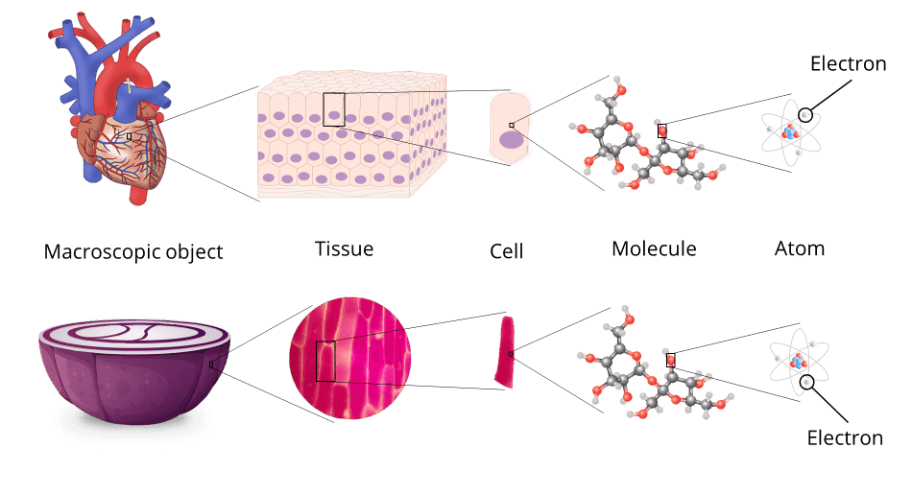
When you think of physics, your might immediately visualise things like the motion of planets, balls rolling down slopes, levers and so on.
In fact, most of the physics of everyday objects can be accurately described by classical laws of physics, such has those put forth by fellows like Isaac Newton and Albert Einstein.
But dive into the realm of atoms and subatomic particles (i.e., the tiny stuff that make up all matter such as protons, neutrons and electrons), and the classical laws are pretty much useless.
You see, if you run an experiment twice without changing any aspect of the experiment whatsoever, you expect to get identical results according to the laws of classical physics.
With macroscopic objects that is true.
With the micro-world classical physics fails miserably.
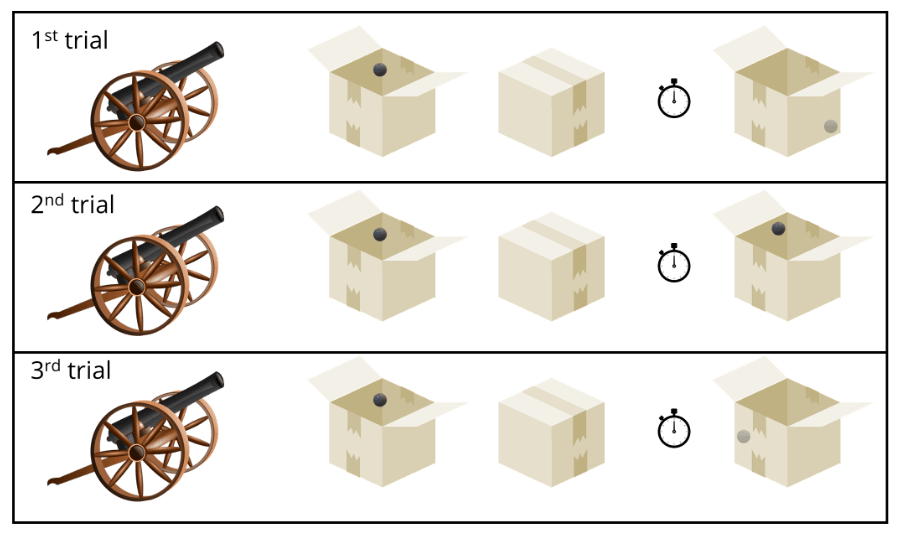
Imagine we decide to run an experiment in which we shoot electrons into a box, and after exactly 5 minutes we measure its location (see figure above). Let’s say we detect it at the lower right corner of the box.
Good! Now, repeat the same experiment in the exact same way.
Logic tells you that you should detect the electron in the lower right corner, right? However, this time it might be detected at the top left of the box. Repeat the experiment, and the third time it might be detected in the middle left corner.
In fact, you will never be able to predict where the electron is located. Never!
Now you might argue: “Wait, wait, wait, wait. I know Google is working on a quantum computer, and that deals with those electron thingies and whatnot. So how can they create complex stuff like computers from something so unpredictable like electrons?”.
I said you cannot predict the location of electrons based on a single measurement. There is, indeed, a way to check for regularity, and that comes in the form of probability.
(As an undergraduate student, statistics was one of my favourite topics at university. My colleagues found me weird, and the feeling was reciprocal. Why wouldn’t anyone find statistics interesting?)

Back to the electron.
If you take 100 measurements of the location of the electron in the box, you can compute something called a distribution. In the case of the electron experiment, it really just means counting the amount of times the electron appears at several places in the box and plot the values (see figure above).
That distribution might tell you, for example, that 9% of the electrons (9 electrons) are in the left lower corner, 17% (17 electrons) in the right lower corner, 12% (12 electrons) in the left upper corner, 25% (25 electrons) in the right upper corner and 37% (37 electrons) in the center.
Now take once again 100 measurements of the location of the electron using the exact same set-up.
If you plotted the distribution of those newly 100 measurements, you would likely see a similar distribution as the first sample.
Thus, we cannot predict the exact location of the electron in any single measurement, but we can determine the likelihood of finding the electron at any specified location.
For example, I can now say something like:
“I can’t predict the exact location where the electron is located, but I can say that there is a 37% chance that it will be located at the center”.
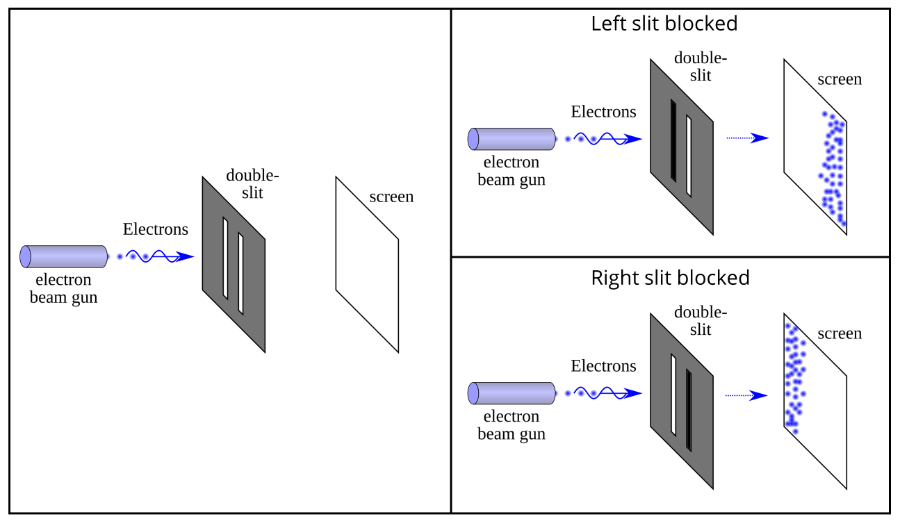
OK, so we have established that you cannot predict the location (or any other property really) of quantum particles, such as an electron, using single measurements, but you can get an estimate using probabilities.
The world of physics is filled with cool and groundbreaking experiments, but, to me, the double-slit experiment ranks among one of the most phenomenal experiments that led to the most outright bizarre results I have ever seen.
The set-up works more or less like this: Imagine you have a barrier with two slits which are separated by less than one millimeter (see left figure above).
Next, you shoot electrons from an electron gun and measure where they hit on a detector screen placed behind the barrier with the slits.
First, let’s close the left slit and shoot one electron at the time. The top right figure above shows what happens.
As you would expect, they accumulate on the left side of the detector screen – there is a bit of spread because some electrons pass right in the middle of the slit, some bump on the slit and change course, etc.
Now, close the right slit now and shoot electrons through the right slit. What happens? That’s right, you see their trace on the right side of the screen (see bottom right figure above).
OK, nothing terribly exciting about this. But what happens if we open both slits?
If your answer was: “well, obviously the result should be a combination of the two”, oh boy, are you in for a surprise!
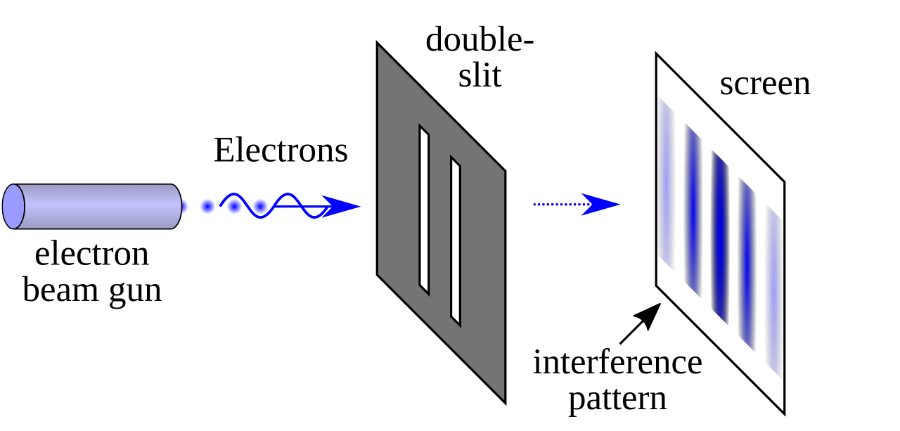
The result scientists actually find is shown in the figure above.
When they shot electrons one-by-one when both slits were opened, they observed a series of light and dark bands which corresponded to the places where electrons either hit the detector screen (light band; in the figure above that corresponds to the blue bands) or did not hit the detector screen (dark band; in the figure above that corresponds to the white bands).
Huh?!?, weird…
Why the heck aren’t we seeing a combination of patterns when either slit is opened? How did these dark and light stripes came to be?
As it turns out, the black and white stripe pattern is called an interference pattern, and to physicists it can only mean one thing: waves.
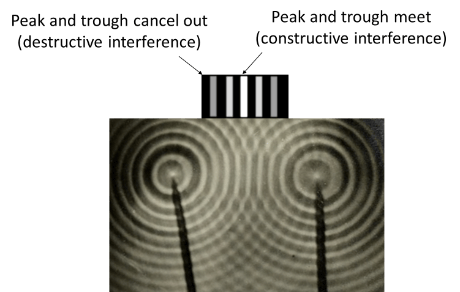
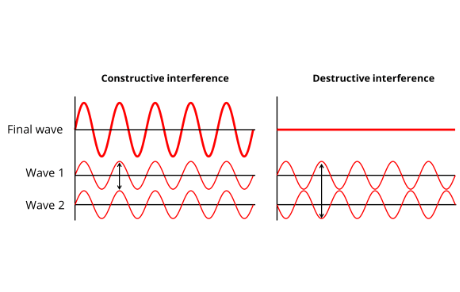
Think of the wavy pattern that you get when you throw two rocks side-by-side on a pond.
If the peaks of the waves overlap they will form larger waves.
If the troughs (or valleys) of the waves overlap they will form larger depressions.
If a peak of a wave overlaps with the trough of another wave, they will cancel each other out. This is exemplified in the right figure above.
Now, imagine you’d placed a detector screen at some distance from the origin point of the waves (see left figure above). Once the waves interacted and hit the detector screen, it would show a bright spot whenever a wave was high, or a dark spot if there was no wave.
Do you notice the similarity with the pattern we get for the electron when both slits are opened? There is no denying.
This can only mean that the electrons in the double-slit experiment are behaving like a wave.
If the peaks of the waves of the electron overlap, you will get a bright band on the detector screen.
If the peak and a trough meet, the two will cancel each other out, and you will get a dark band on the detector screen.
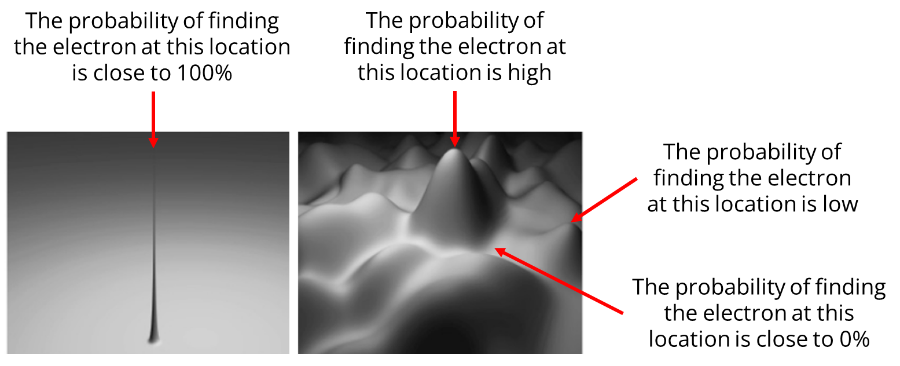
But what exactly is this wave? What is it made of?
Even though I encourage you to visualise the electron wave as an actual wave, it is actually not a physical wave. It’s purely mathematical, and it’s called a wave function (or probability wave).
The wave function of the electron defines the likelihood of the electron being at a particular location.
If the value of the wave function is high (near its peaks) at a certain point, the more likely it is that the electron will be found there. As the wave moves across time, the values of the wave change, going up at some locations and then down at others.
If there were only one peak in the wave function like in the left figure above, we would know with almost 100% certainty where the electron would be located.
However, for quantum particles, the wave function is way fuzzier and spread out like in the right figure above.
A big old question is what happens to the wave function when it reaches the detector screen?
The wave function arises when a quantum particle is moving – think of a wave moving through the slits as in the video above.
Part of wave goes through the left slit, part of the wave hits the middle of the barrier, and part of the wave passes through the right slit.
And remember, the electron gun is firing one electron at a time, so each electron must be transformed into this wave function that doesn’t exist in physical space (it’s only mathematical).
Now, because the wave passes through both slits, they will form one wave in the left and one wave in the right slit, so they will interact with each other.
This means that the wave of the electron is interacting with itself (this is the reason why people sometimes colloquially say that the electron is passing through both slits at the same time – actually it’s its wave function).
When the wave function is about to hit the screen, the landing position of the electron is determined by its value in the wave function: if the value is high, it’s likely to be a landing place, if the probability is low, there will be a very low chance we will find the electron there.
So, in some way, the wave function is the electron itself, and where there is non-zero probability, it is a possible location for the electron to be at.
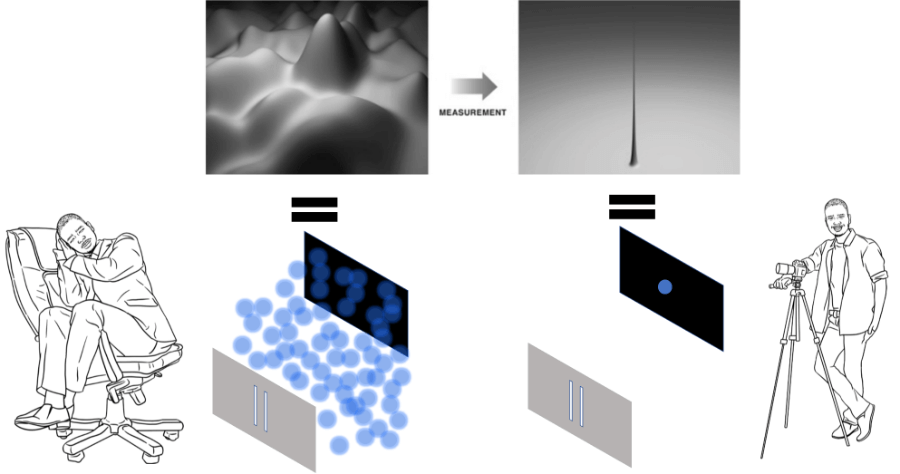
According to a popular hypothesis, whenever we are not observing or measuring the location of the electron, the electron can be described by its wave function (it is everywhere where the wave function is non-zero).
However, as soon as the wave function touches the detector (or someone makes a measurement), it collapses into a single spike – the electron itself, which is shown as a dot on the screen.
This is exemplified in the figure above. Note how the wave function is reduced to a single spike when it meets the detector.
This interpretation has come to be known as the Copenhagen interpretation, first proposed by Niels Bohr and Werner Heisenberg.
However, the Copenhagen interpretation is at odds with very solid quantum mechanics mathematics.
Specifically, the Schrödinger’s equation – which forms the mathematical basis of quantum mechanics – does not allow waves to collapse. Schrödinger’s math is able to explain many phenomena with incredible accuracy, so there is no reason to believe it is inadequate to explain the change from the wave function to an actual measurement.
But, then, if the wave function does not collapse, why do we only see one dot and not a multitude of dots where the wave function has a non-zero probability?

When faced with a wave function with spikes of different heights, Schrödinger’s math tells us to combine the results.
This is akin to having an equation such as \( x^2 + 5x + 6 = 0 \) which can have two solutions: -2 and -3.
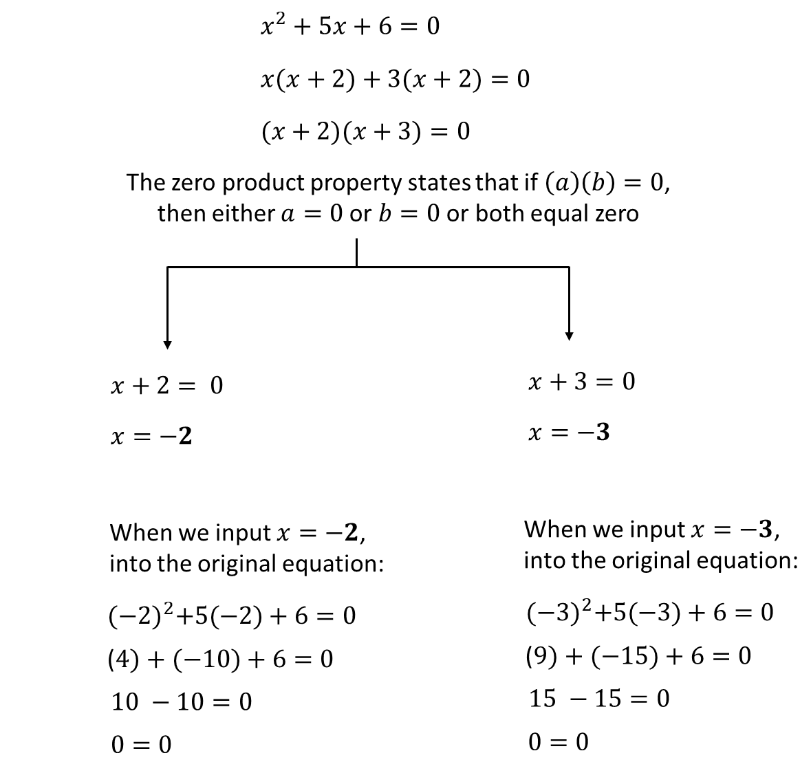 So, there are two solutions (or roots) to the quadratic equation \( x^2 + 5x + 6 = 0 \): -2 and -3.
So, there are two solutions (or roots) to the quadratic equation \( x^2 + 5x + 6 = 0 \): -2 and -3.
Schrödinger’s equations are similar in this respect, in that it gives us multiple solutions when we input the wave function of a quantum particle.
Now, the implication of this is that if we make a measurement, and if the wave doesn’t collapse, then the measuring device (and, by extension, our brains) should register multiple locations at once.
But, surely, that’s silly, and not what we experience in reality. If you fire only one electron towards the screen, the detector (and your brain) only registers one dot on the screen, not many dots simultaneously.
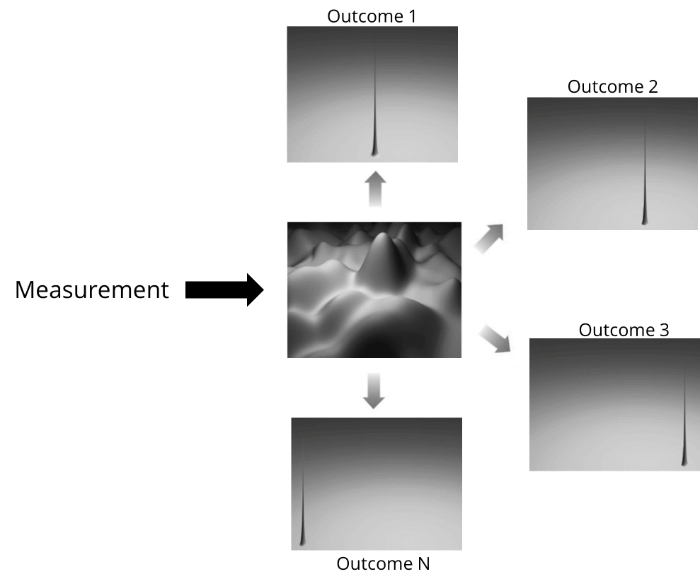
While writing his doctoral thesis in 1957, Hugh Everett had a phenomenal insight.
He speculated that the reason we are not experiencing all outcomes at once is because every time you make a measurement the device “splits” into different timelines, each with a different outcome.
So, if the wave function of the electron has 100 peaks with non-zero probability, then, upon measurement, there will be 100 devices, each showing one of the 100 possible locations of the electron.
But remember that we are also made of particles, the lab where we do the experiment is made up of particles, the entire universe is made up of particles.
What happens then is that the wave function of the electron gets mixed up with the wave function of everything else in the universe, giving rise to another wave function: the ultimate wave function.
Using slightly more technical wording, the electron and the environment (which we are part of) have become entangled. The result is distinct, isolated states, which form independent realities. This is called decoherence.
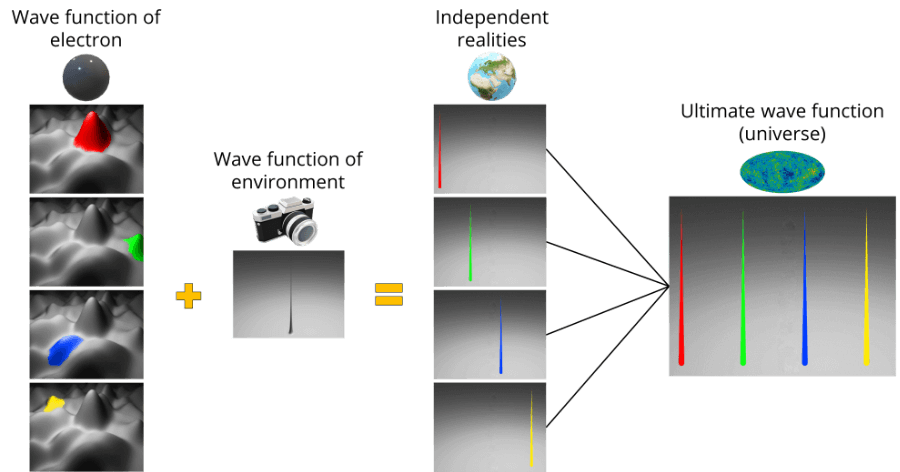
Many explanations of the Many-worlds interpretation make use of phrases such as “the universe splits”.
We should refrain from such phrasing because it gives the (wrong) idea that there are actually universes being created out of thin air, which is completely counter to what the Many-worlds interpretation is proposing.
No, the universe doesn’t split.
Rather, there is only one universe which is defined by the commingling of the particle’s wave function with the wave function of the environment (the ultimate wave function).
The ultimate wave function can be decomposed into separate independent “branches” that originated from the decoherence process (i.e., when a measurement was made, all outcomes given by the wave function were realised in different timelines).
So, there is only one ultimate wave function (i.e. one universe) with different spikes representing independent timelines.
In other words, rather than having parallel universes, each with its own matter, we have one universe within which different timelines are evolving completely independently.
Everett also pointed out that his proposal can be generalised to any measurement. If a split occurs and one of these yous does another similar experiment, that world would split again into many other worlds, and so on…
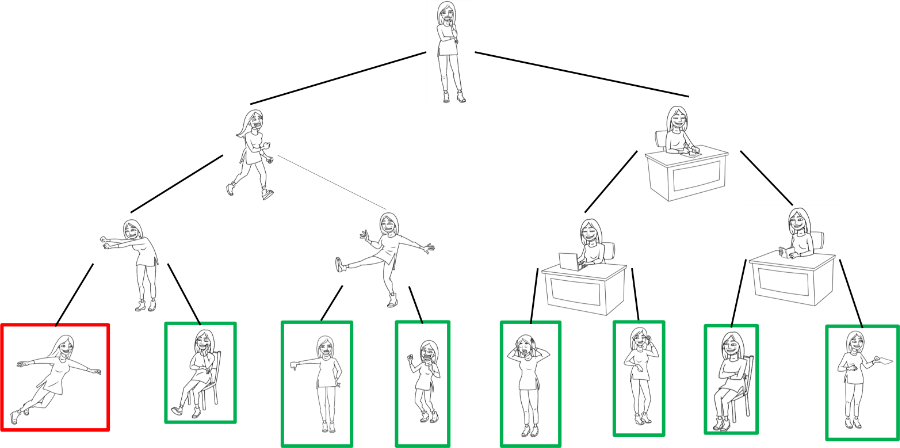
I hope you see where I’m going with this.
If upon measurement of a quantum phenomenon our timeline splits, then that means that there are a really huge number of worlds “emerging” every second.
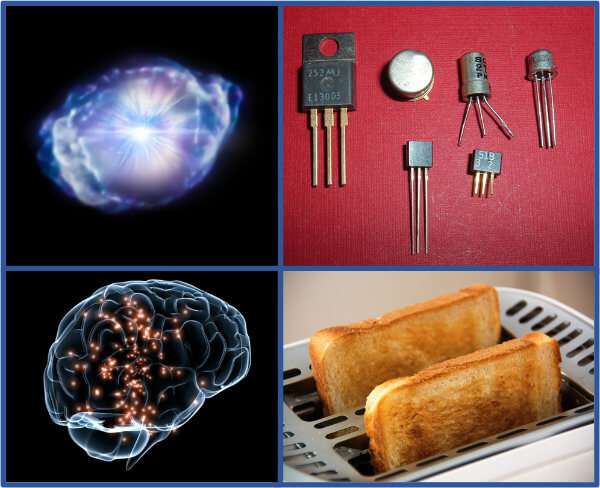
You might think that splitting will be rare since only physicists do double-slit experiments.
However, Everett’s proposal is general, and applies to every quantum particle that is confronted with a choice – particles in your own body can cause a split, particles in the north pole can cause a split, particles in the Sun can cause a split, particles in another galaxy can cause a split, and so on and so forth.
This means that there are (perhaps) an infinite number of timelines.
And let’s be completely clear. None of these universes is any more real than the other. As soon as a quantum measurement is made becomes entangled with the wave function of the quantum particle, resulting in a multitude of independent realities.
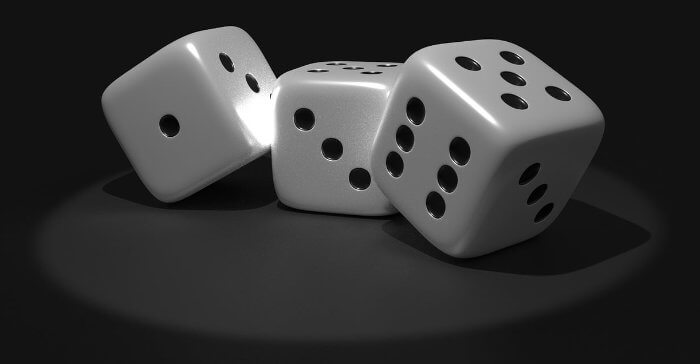
You may have noticed that in the Many-worlds interpretation of quantum mechanics, everything that is possible to happen will be developed into its own world. By “everything”, I mean outcomes with a non-zero probability.
But here is the catch: if every single outcome occurs, even those with little probability of occurring, then what do the probabilities of the wave function actually mean?
If the wave function tells us that the electron is 50% more likely to be found at the top right, 45% on the top left, 4.9999999999% at the bottom right, and 0.00000000001% at the bottom left, then we can assume that it’s really, really, really unlikely that the electron will be seen at the bottom left.
However, according to the many-worlds approach, 0.00000000001% is still a non-zero probability, so the electron will definitely show up at the bottom left in some world.
Everett responded to this criticism by claiming that probabilities enter the Many-worlds but in a very subtle way.
To understand his reasoning, consider this thought-experiment that I read in the book “Hidden reality” by Brian Greene.
Imagine that a race of aliens come to Earth and tell you that they will create a copy of yourself while you sleep tonight. This copy will be exactly like you in every single respect but will live in a parallel timeline so the two of you won’t interact. In fact, both of you would think they spoke with the aliens, and both would be right.
The aliens also say that on the next day, they will grant one of you a wish of your choosing, whereas the other will be taken to the aliens’ world and become their slave.
A 50% chance that you will become slave is too much of a risk for any sane person, so you would probably reject the offer.
OK, let’s say now that the aliens make another offer. They will create one million copies of you and will grant a wish to 999999 of yous, but one of you will still become a slave.
Now, what do you do? The likelihood that you will be picked is very very very tiny – almost zero. So you might think, why not.
Hah! But therein lies the problem.
It will be absolutely certain – 100%! – that you will end up being a slave, because the unlucky you will also be you!
So, before the cloning actually takes place, it makes no sense to speak of probabilities, since it is a given that one of you (and, so, you) will become a slave.
Contrast this when morning arrives. As you open your eyes, you start pondering what are the odds that you will be flying away as the aliens’ slave.
Because now you are a separate being, distinct from the other yous that inhabit the other timelines, it makes sense to talk of probability. You can now say that the chances of this particular you ending up a slave are 1/1000000, and realise that this is indeed a very small chance.
Applying this to the the double-slit experiment, when you are not observing the electron, you know it exists at every location. You also know that when you make a measurement, every outcome will be realised in different timelines, so one of you is guaranteed to see the electron in a particular location. In this case, it doesn’t make sense to talk of probabilities, because there is 100% certainty that the electron will be in every location in at least one of the timelines.
When you make the measurement though, you can ask yourself what is the likelihood that this particular you will see the electron on the lower left of the screen.
All of a sudden, probability makes sense, since the particular peak of the wave function that allowed for the world you are in is associated with a probability value.
If that value were 9%, you could say that this particular world you inhabit is a relatively rare one.
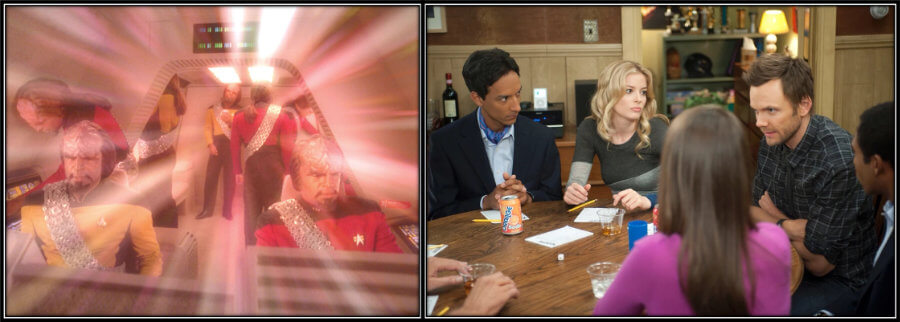
The parallel-worlds theme in the entertainment business is definitely not new. Many novels, films and TV shows have adopted the idea that there might be, in the immensity of the cosmos, other worlds that look just like ours.
Think of the episode “Parallels” from the TV show Star Trek: The Next Generation or “Remedial Chaos Theory” from the TV show “Community”. .
What makes Dark Matter different is that it tries to adhere to the original interpretation with a high degree of fidelity (even though plot holes still exist).
Crouch did his homework and his explanations are accurate and very understandable even for laymen.
I’ll not comment on the mechanisms of the box and ampoules that would allow you to reach a state of Superposition. Quite frankly, nobody has a clue how this could even work in theory, so I doubt Crouch based his ideas on solid research (other than vaguely suggesting altering the chemistry of the prefrontal cortex).
Let’s start this analysis with a few interesting ideas from the book that we can immediately link to the Many-world interpretation (if you don’t know what the Many-world interpretation is, please refer to the section Many-worlds-interpretation).

Jason’s earlier research years had focused on developing a cube that would allow putting a macroscopic object into Superposition.
As Jason recalls:
“My concept for my tiny cube was to create an environment protected from observation and external stimuli so my macroscopic object […] could be free to exist in that undetermined cat state and not decohere due to interactions with its environment”.
If you read the section Many-worlds-interpretation, this should all now be familiar to you.
In short, Superposition occurs when two waves interact and create areas of constructive (the peaks and troughs) and destructive (when peaks meet troughs and cancel each other out) interference. The higher the peak the more likely it is that a particle or groups of particles is in a particular state (e.g., location).
For example, for a moving electron, the higher the wave peak the more likely the electron will be found at that location when a measurement is made.
Jason2 refined this line of investigation and managed to upscale it to human beings. Of course, Jason2 faced a problem. Our consciousness would never allow us to be in Superposition, because the mere act of us observing would “collapse” the wave function and we would experience one and only one reality.
So, Jason2 asked a colleague to manufacture a psychoactive compound that could temporarily silent three brain regions within the prefrontal cortex – a major site in the brain thought to be involved in decision making and attentional control.
Thus, taking the drug would effectively turn off the “observation deck” of our brain, allowing superposition to take place.
The box would prevent others from observing whoever was in a Superposition, thus, preventing decoherence.
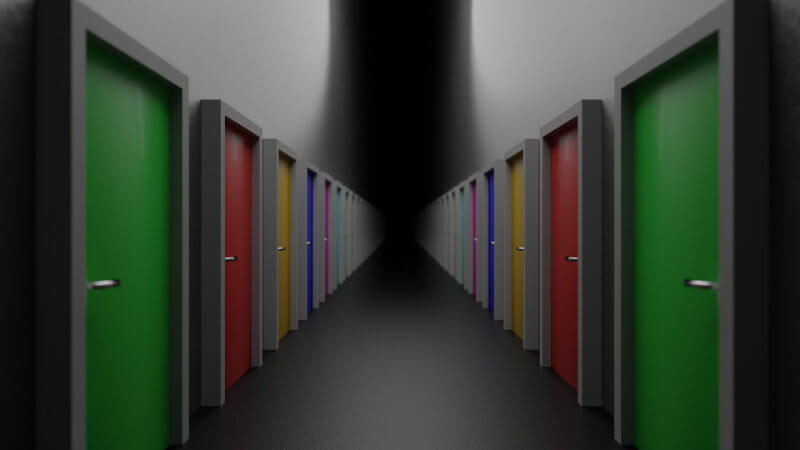
When Jason and Amanda enter superposition, they find themselves in a never-ending corridor, with an infinite number of doors perfectly aligned.
The corridor that Jason and Amanda ended up in is one of the coolest and weirdest descriptions in the entire novel.
The corridor, as Jason explains, isn’t a concrete physical location. It is a product of their minds, as their brains try to make sense of Superposition. Remember, our brains are very limited; our senses have evolved to make sense of a 3D world.
Visualising superposition of states of even a single fundamental particle (such as an electron) would be way out of the possibilities of the most brilliant of brains.
Each door is essentially a quantum state in the wave function. Remember the double-slit experiment? (if not, please read section The double-slit experiment) I mentioned that the ultimate wave function is composed of all possible locations of the electron entangled with our environment. Likewise, the corridor is the ultimate wave function as interpreted by Jason’s and Amanda’s brains.
Also, in the context of the double-slit experiment, each peak in the wave function of the ultimate wavefunction corresponds to a reality where the electron exists at a particular location. Likewise, in Dark Matter, each door in the corridor corresponds to a possible reality.
Also, remember that when we make an observation, the wave function of the quantum system becomes entangled with the particles of the environment (ourselves included), which causes decoherence and the emergence of alternate timelines.
Decoherence is represented by the opening of a door. Once a door is opened, a decision has been made, and Jason and Amanda will experience one, and only one, reality behind that door.
Why? Because when they open a door, the outside environment (all those atoms, photons, molecules, etc. that make up the environment) interact with the interior of the box (or, to be precise, their wave functions interact).
Since the interior of the box is in a state of superposition, the wave function of the macroscopic object (the environment) “forces” the superpositioned quantum system to acquire a definite state (decoherence kicks in). The result: you experience one and only one reality.
That is why when they go through a door the corridor collapses and they find themselves in the ordinary box.
The drug will only have an effect within a specific amount of time. However, within that time, Jason and Amanda are free to open the same door several times, and will find themselves in the exact same world.
Importantly, as soon as they take another ampoule, the corridor resets itself, so if they open the same door, the world will be a different one.
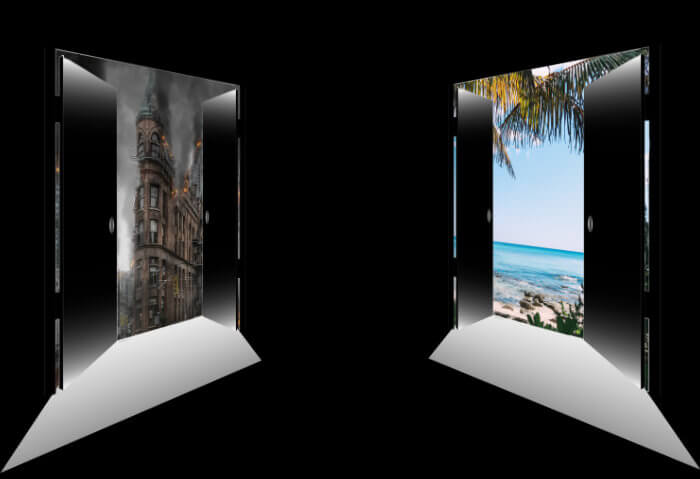
Now, later in the novel, Jason has the epiphany that they are able to control the type of worlds they can summon. When they open the doors, they will not find themselves in a world that has been purely dictated by chance. The world that presents itself is determined by the feelings the person is having when she/he opens a door.
For example, if your emotional state at the time of opening a door is that of being afraid, desperate and anxious, then the world will be a reflection of those negative feelings (e.g., a ruined and desolated city).
If, on the other hand, your feelings are of joy and happiness, then the world might turn out to be pleasant.
So, there is nothing random about the worlds found behind the doors. The key is to control one’s feelings, be specific about the kind of thoughts that emerge and guide all of these feelings and memories in a positive direction.
At this point, I have to say that I found the idea very silly.
Even if you are a person with an exceptionally emotional self-control, feelings are likely to sway within seconds, especially under duress.
Also, I’m not sure how past memories, which are very unreliable even for recent events, would allow the summoning of the particular world you are familiar with.
You see, even conjuring the image of Daniela in a dress with the wrong color could catastrophically send Jason to a completely different world; one, for instance, where Daniela has that kind of dress, but she is a serial killer (remember that under the Many-worlds interpretation, if a world is possible to exist, it will exist).
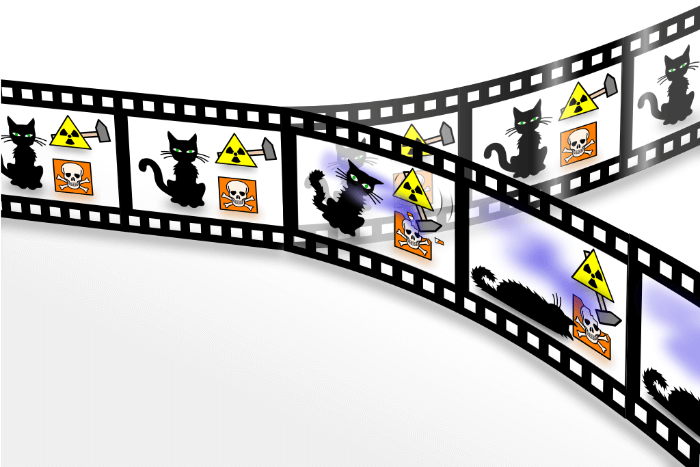
Now, the part when Jason finds that there are multiple Jasons in his world. Even though I’d have liked to say that I saw it coming, I didn’t. This was quite unexpected turn of events, and on the positive side. I was already expecting an epic (if cliché) battle with Jason2 for Daniela, but was happy to have been proven wrong.
So, according to the Many-worlds interpretation, splitting of timelines occurs pretty much all the time.
In the corridor Jason is in a superposition of states, so he can’t split any more than that (since superposition already entails all possible outcomes). However, as soon as he enters an actual world, his decisions in that world mean that branching will occur.
And remember from the discussion in the section Many-worlds-interpretation: every single time a quantum particle is faced with a choice, the timeline splits. And this can happen all the time and everywhere; a quantum process in the electrons in Jason’s brain can cause the timeline to split, and so does a supernova explosion in a far away galaxy.
Now, that’s all fine and good, but it comes with an important implication. Crouch seriously misrepresented the amount of Jasons that would have been “created”.
As I’ve described above, splitting is happening all the time – possibly even an infinitely amount of times.
Thus, even though it would be perfectly plausible that not every Jason could make it through, infinite is a really huge amount to work with.
And this brings me to one of the most uncomfortable aspects in the novel, and one which I think might not be obvious to many readers.
As you keep reading the book, you may feel that the Jason that is narrating the story is the actual Jason.
For example, do you think that Daniela should choose the Jason that she picked up at the police headquarters?
If your answer is yes, then I have to tell you that Daniela would be just as correct picking any of the other Jasons.
Think about it. We know that Jason will split as soon as he enters another world, that’s a certainty. From that moment on, he will face multiple decisions – some were unfortunate decisions and he died, some were fortunate and he survived.
You might argue that the Jason narrating the story must be the real Jason, because he is in possession of all the memories and feelings related to his life with Daniela and Charlie.
Furthermore, there is no disruption in Jason’s behaviour or thought-processes. He acts like the Jason before the kidnapping, he has the same opinions as he had before the kidnapping, he feels the same towards Daniela and Charlie as he did before the kidnapping, etc.
But, again, that is fallacious thinking.
For example, take the scene where Jason goes to Jason2’s flat, thinking to be his own. As he walks around, he realises, to his chagrin, that it isn’t his flat. He first enters the dining room, goes to kitchen, then living room, and bedrooms.
But what if he had gone first to the bedrooms, then kitchen and finally living room? Would the story line be that different?
Not really. Leighton would still show up, and all the events would turn out to be virtually identical.
But both Jasons exist, and their timelines are almost identical. So, which Jason is the real one?
Again, you might argue that the real Jason is the one that chose the order in the book (first dining room, then kitchen, then bedrooms) because that’s what Jason would do.
But I could counter-argue and say that maybe the actual Jason would first look in his son’s bedroom to see if everything is alright with him.
To stress this point further, in the Many-worlds interpretation, both Jasons exist and will go through almost exactly the same experiences.
In fact, Jason will make even much minor decisions (such as looking either left or right) that could potentially split the timeline, and have negligible effects in the development of the story.
So, many of Jasons’ timelines will run almost entirely parallel, but we are only viewing the timeline of one of them – the timeline in the novel.
In fact, we don’t need to go back that far into the story. What about the scene just before Jason manages to find his Chicago, when he writes his last entry in the notebook:
Sitting in the doorway of the box, I open the notebook.
I’ve been thinking ever since I woke up about what Amanda said in her goodbye note, how I haven’t really written what I feel.
Here goes…
Right after he wrote the full entry, he goes into the box, takes the drug and opens the door that leads to his Chicago.
Now, why am I mentioning this?
Because right before he steps into the box, there might have been a multitude of branchings (remember, a simple change from looking left or right can cause a split).
This means that that particular Jason – the one who had just written the note – will have copious of doppelgangers with the exact mindset to arrive in Jason’s Chicago.
And they will all succeed. They are all the same Jason, one is no more truer than the other.
One thing is for sure though. Whenever the story is narrated about Jason2 and Daniela (when Jason is stuck in Jason2’s world) there is a shift from first-person narration to third-person narration.
This is interesting, because it gives us a subtle cue that Jason2 isn’t considered a “real” Jason.
My argument above is that the Jason that ended up with Daniela shouldn’t be thought of as the real Jason (all Jasons are equally real), but Crouch leaves no ambiguity as to whether Jason2 is a real Jason or not.

Just out of fun, let’s ask ourselves a question: which Jason should Daniela actually pick?
It’s a rather silly question really, given that I just explained that no Jason is more real than the other, but it’s a fun game nonetheless.
So, how should Daniela base her decision regarding who is the real Jason?:
(1) she should pick one at random (e.g., by drawing lots)
(2) she should choose the Jason that arrived first (not counting Jason2)
(3) she should group Jasons by how similar their timelines were, and choose one from the group that had a more “normal” timeline
(4) she should select the Jason with the timeline that had a greater wave function height
Let’s make this interesting. I’d be very curious to see what option you would find more acceptable/reasonable were you to be in Daniela’s shoes. So, feel free to let me know which option you went for in the comment section below.
Although this may sound like an amusing thought-experiment, it is actually at the heart of many problems for the Many-worlds interpretation.
Even though fairer, most would say option 1 is a terrible option. Picking one at random without knowing what kind of vicissitudes that particular Jason went through just spells disaster.
For example, there is a chance Daniela may pick a Jason whose experiences in the other worlds messed his mind up to such an extent that he, for all intents and purposes, wouldn’t be Daniela’s Jason anymore.
Option 2 is perhaps more appealing to some people. After all, the first Jason to arrive is the one that effectively “won the race”, so it would be fair that he should get credit for it.
However, the problem with option 1 applies here as well. Even though this Jason is just as real as any other, he could be a complete psychopath.
Option 3 is a bit trickier. Daniela could ask all Jasons to report their experiences and maybe even let them go through some psychological evaluation. That way she could determine which timeline was likely to have had less of a negative effect on Jason.
Some Jasons would have very similar timelines, so she could group them based on how severe that timeline was.
After separating the wheat from the chaff, she could draw lots and select one Jason at random from that timeline, since they would all be very similar.
Even though, at face value, this option sounds reasonable, just because the timeline had a relatively innocuous effect on the Jasons, it does not mean it is a typical timeline.
Which brings me to option 4.
I’d like you to think of the wave function of the electron (see the section Surfing on the wave function). The higher the value of the electron’s wave function, the more likely we are to find the electron located there. In contrast, the lower the value of the wave function, the less likely we are to find the electron located there.
So, given many trials, the majority of electrons will hit the region with highest probability, and would, thus, be the most “typical” electron.
Similarly, Daniela could choose a Jason from the group that was associated with the wave function with the greatest height (of course, assuming she had access to such data). That would mean that these Jasons shared the most typical story, and, thus, would diverge less from the initial split (because the least likely the Jason is, the more atypical his experiences were).
It may well be that the Jason that Daniela ended up with came from such a timeline. But what I’d like to point out is that there could have been a timeline in which Jason figured out a way to his Chicago without seeing any deaths for example. This timeline would have been much milder than the timeline described in the novel, even though not very likely.
Thus, if Daniela chose option 3, she could have chosen a Jason that diverged a lot from the initial split.
Of course, if Daniela did go with option 4, she would still need to face the arduous task of choosing one of these typical Jasons, and there is no guarantee that this “typical” timeline would be a good timeline.
So, Daniela would find herself in an impossible position. There would be really no way to know which Jason is her actual Jason, because they are all her Jason – even the psycho ones, I’m afraid.

That brings me to the last chapter of the book.
Probably you wish to know what kind of world do the Dessen family steps in.
Jason tells his son, Charlie, that it should be he who opens the door. Given that we know that the person’s feelings and emotions are key in summoning the right world, what can we say about Charlie’s state of mind?
Confused, possibly doubtful, likely afraid, definitely anxious.
Hhhhmm… I don’t know about you, but none of these feelings sound particularly encouraging to me.
Unfortunately, the description of the new world couldn’t be more uncommitted:
A wind through the door carries the scent of wet earth and unknown flowers.
A world just after a storm.
That can pretty much mean anything: from a wonderful Rivendell to a terrifying Mordor.
My take is this. As a newcomer to the multiverse, I very much doubt that Charlie would have had the capacity to bring about a serene and beautiful world on his first attempt.
Not only because he is a teenager (and we all know the mess that goes inside the mind of teenagers), but that he just had literally been chased, witnessed murder in front of him and almost died.
And if that wasn’t trauma enough, he is told in the moment that will have to choose the world they will be forever stuck in (remember, no more ampoules after that). Quite a responsibility to give a kid, if you ask me…
More likely, the world Charlie summoned would be something along the lines of Jason’s initial experiences with the box, in which case a not so pleasant life would expect them.
To add an even more macabre ending, there’s a terrible flaw with Jason’s escape plan.
We shouldn’t forget that there are splits occurring all the time, including when Jason asks his son to choose the world they will be living in.
Remember, in the multiverse of Many-worlds all the things that can happen, will happen.
In some other timeline, one of the other not-so-nice Jasons will try, and will succeed, in killing Jason.
And again, don’t fall prey to the idea that it’s enough that one of them escaped, so Jason and his family are all and well in some world.
To keep pressing the point, they are all the same Jason, Daniela and Charlie. The timelines are evolving independently, and do not communicate. The Jason that got murdered isn’t thinking in his deathbed “Shoot, I’ll die… Oh well, at least one of my clones survives”.
No.
Jason is completely unaware of the other timelines.
To this Jason, it is game-over.
Gosh, that was a depressing ending for this analysis.
To be perfectly honest with you, I’m probably overthinking the consequences of Jason’s branching. In all likelihood, Crouch meant the Dessen family to meet a happy ending, and that is certainly the conclusion many readers will also reach.
The questions and interpretations I put forward in my analysis above are probably the result of my tendency to wish to stimulate discussion. 🙂
Anyways, in Dark Matter, Jason succeeds in putting himself in a state of Superposition, allowing him to visit every possible world that is allowed in classical physics.
After figuring out a way to control which timeline to travel to, he finally manages to get back to his own world. Encounters with other Jasons that he had unwittingly “created” in the other worlds lead him to take the drastic decision to leave his world and, together with Daniela and Charlie, find subterfuge in an unknown world.
Daniela chose one Jason, the Jason narrating the story, even though that choice is still questionable. Any other Jason would be justified. In fact, unless we collect every Jason’s travel report, psychological profile and wave function, there is no way to know if Daniela has made the “correct” choice (if there is even one).
It is also unclear what fate awaits the Dessen family. Charlie is given the task to choose a world that they will forever be. Probably, it’s all well and good, and they emerge in a world not very dissimilar to ours.
I put forward a different idea though, that the Dessen family may step into a world of chaos, not unlike the worlds from Jason’s initial interactions with the box. Charlie must have been in a whirlpool of emotions at the critical period to conjure up a world, and this would have had repercussions.
I would like to conclude this article with one last observation. What will Jason, Daniela and Charlie do in this new world? Even if the world they arrive in is benign, and assuming there is a version of them already living there, will they attempt contact? Will this new world require some unknown technology for identification? If so, how will they be able to integrate themselves in the society? Will they end up in jail, guinea pigs in a lab, be forever on the run?
I sense plenty of material for sequels here. 🙂
Some of you may dismiss Crouch’s choice to use parallel universes in Dark Matter as probably corny, hackneyed and overused.
Even more of you probably think the Many-worlds interpretation is the product of some flamboyant physicist’s whim that probably watched way too much Star Trek.
But know this, the Many-worlds interpretation is a valid framework to explain quantum mechanics and how it translates to classical physics.
In fact, it is one of the few interpretations that provide an escape route to many paradoxes, such as time-traveling into the past (if that is even possible).
I guess I’ll re-watch The Terminator in a different light now. 🙂
See you in the next article!
Books
Greene, Brian. The Hidden Reality.
Youtube
About the double-slit experiment:
About the Many-worlds interpretation:
Excelent review and explanation
Thank you for your comment Kaline! I’m really happy you enjoyed the article!